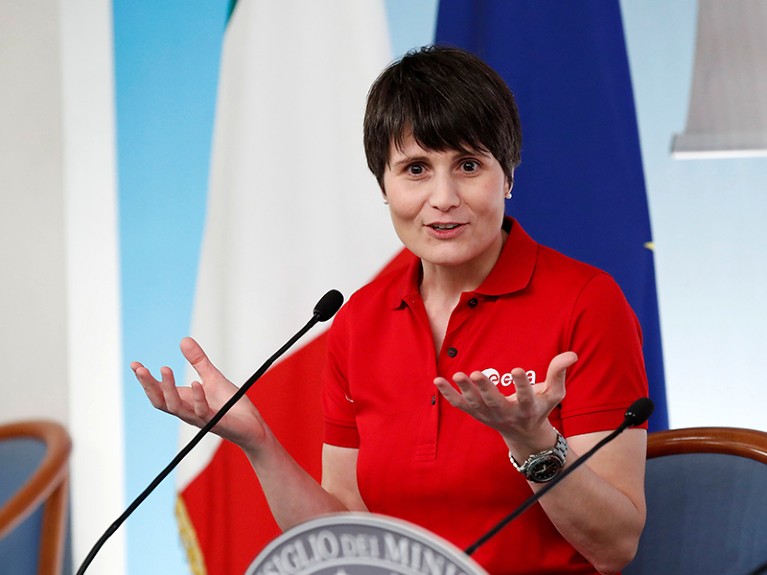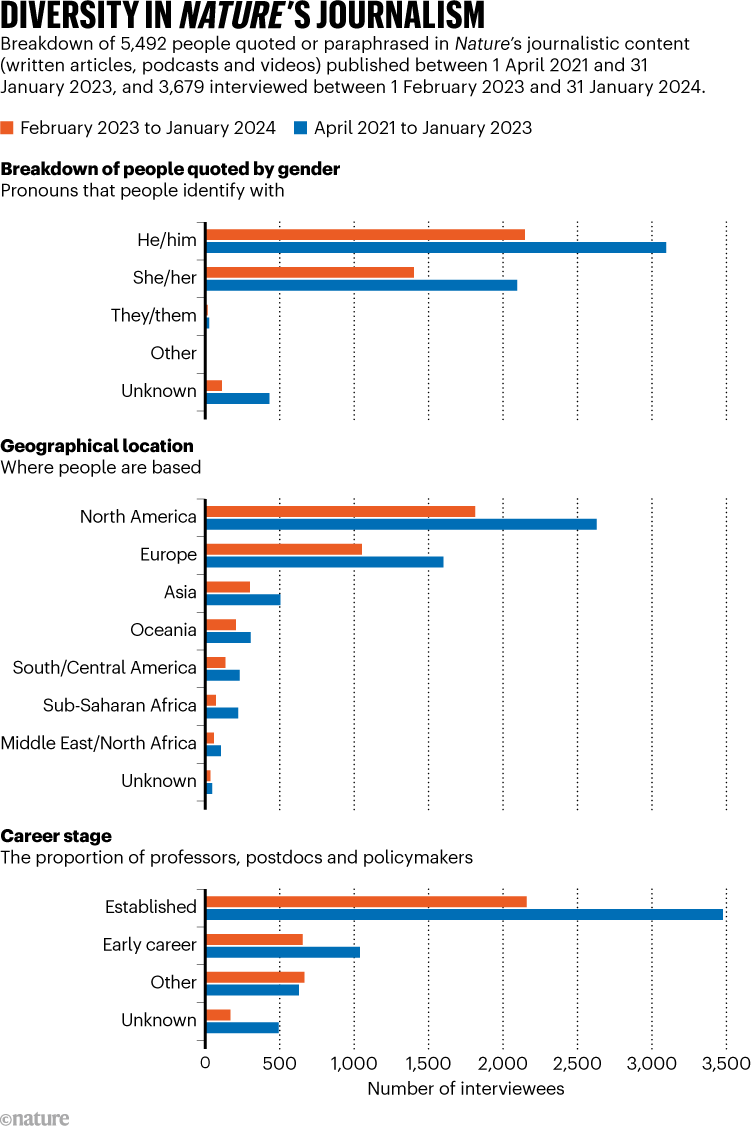[ad_1]

Italian astronaut Samantha Cristoforetti was interviewed by Nature’s Careers team in 2023.Credit: Massimo Di Vita/Mondadori Portfolio/Getty
How can Nature’s journalists reach out to the broadest possible set of scientists and research-associated professionals in our journalism? That’s the question at the heart of our three-year effort to track the diversity of the sources interviewed in the journal’s News, Features and Careers articles, and in audio and video content.
Journalism is a mirror of the community in which it exists — as communities and societies change, journalistic practice and content have to keep up, both to stay relevant and to reflect the needs and priorities of audiences accurately. That’s why, in April 2021, Nature’s journalism teams began recording three characteristics of diversity for their written, audio and video content: the pronouns of the people interviewed, their geographical location and their career stage.
Men dominate the senior rungs of science and, historically, scientists and institutions in North America and Europe have dominated scientific publishing. Both trends are starting to change, albeit at different speeds.
We published an initial set of statistics last February, covering the period from 1 April 2021 to 31 January 2023. Here, we provide an update for 1 February 2023 to 31 January 2024 (see ‘Diversity in Nature’s journalism’).

Our previous analysis of 1,241 written articles, podcasts and video content revealed that 59.6% of sources quoted or paraphrased used he/him pronouns; 76.6% were from North America or Europe; and 67.9% were established in their careers.
For the 862 journalistic pieces in the current analysis, Nature’s staff journalists and freelance writers interviewed 3,679 sources. Of these, 3,569 (97%) provided their pronouns. These broke down into 2,147 sources (60.2%) who used he/him pronouns, 1,401 (39.3%) who used she/her and 21 (0.6%) who had they/them or other pronouns. These ratios are broadly unchanged from our earlier data.
In total, 3,635 sources gave their geographical location. Of those, 2,865 (78.8%) were based in either North America or Europe, and 770 (21.2%) in the rest of the world. That represents a decrease in regional diversity compared with our previous analysis, which showed that 23.4% of sources were outside North America and Europe.
Nature publishes too few papers from women researchers — that must change
Finally, when it comes to career stage, 3,478 sources provided data. Of these, 2,158 (62%) identified as established in their careers — including sources, such as professors and those who hold tenure, and non-academic ones with senior roles. Some 18.8% of sources fell in the ‘early career’ category, including graduate students, postdocs and non-tenured faculty members, compared with 19.6% previously. Around 19.1% fell into the ‘other’ category, which includes people in non-academic environments, such as industry, campaign organizations and policy. This group’s share in Nature’s journalistic content has increased from 12.5%.
There are some caveats to our analysis. These data were gathered by Nature’s journalism teams in North America, Europe and the Asia–Pacific region. They do not include journalistic content commissioned by our other offices. Nor do they include content written by external authors, such as World Views and Careers columns. Furthermore, the results have not been tested for statistical significance.
Still, the results provide a good overview for a large proportion of Nature’s journalism. We realize that reporting our findings is only the first step towards improving the diversity of our sources. Nature’s journalism teams are currently expanding their networks and are also looking at best practice in media and publishing industries.
Diverse sources produce stronger journalism — and better represent today’s global scientific community. The shape and priorities of world science are changing, and we must adapt to reflect those changing realities.
[ad_2]
Source Article Link


